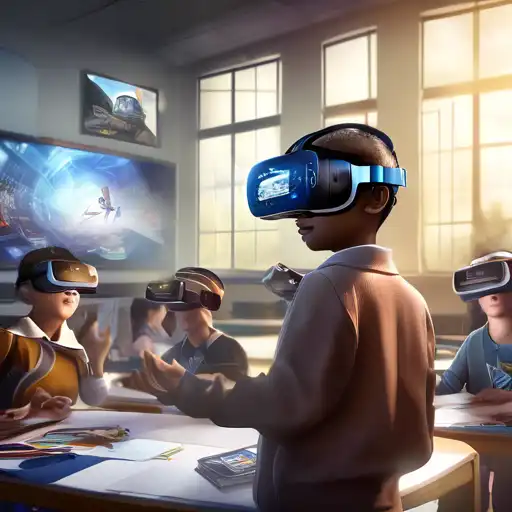Revolutionizing Learning: The Impact of Virtual Reality in Education
In the ever-evolving landscape of education, Virtual Reality (VR) stands out as a groundbreaking tool that promises to transform traditional learning methodologies. By immersing students in a three-dimensional environment, VR offers an unparalleled interactive experience that enhances comprehension and retention. This article delves into the transformative potential of VR in education, exploring its benefits, applications, and the future it heralds for learners worldwide.
The Benefits of Virtual Reality in Education
Virtual Reality brings a host of advantages to the educational sphere. Firstly, it fosters engagement by making learning interactive and fun. Students are no longer passive recipients of information but active participants in their learning journey. Secondly, VR facilitates experiential learning, allowing students to explore historical sites, dissect virtual frogs, or even traverse the solar system without leaving the classroom. This hands-on approach significantly improves understanding and memory retention.
Applications of VR in Educational Settings
The applications of VR in education are vast and varied. In science, students can conduct experiments in a safe, controlled virtual lab. History classes can transport students back in time to witness significant events firsthand. Language learners can immerse themselves in environments where the target language is spoken, enhancing their linguistic skills. Moreover, VR is instrumental in special education, providing tailored experiences that cater to the unique needs of students with disabilities.
Challenges and Considerations
Despite its potential, the integration of VR in education is not without challenges. The cost of VR equipment and the need for technical support can be prohibitive for some institutions. Additionally, there is a learning curve associated with using VR technology, requiring both teachers and students to acquire new skills. However, as technology advances and becomes more accessible, these hurdles are expected to diminish.
The Future of VR in Education
The future of VR in education is bright, with ongoing advancements promising even more immersive and interactive learning experiences. As VR technology becomes more affordable and widespread, its adoption in educational settings is set to increase, paving the way for a new era of learning that is engaging, effective, and inclusive.
For more insights into innovative learning technologies, explore our EdTech Trends section.
Conclusion
Virtual Reality is redefining the boundaries of education, offering dynamic and immersive learning experiences that were once unimaginable. While challenges remain, the potential of VR to enhance education is undeniable. As we stand on the brink of this new era, it is clear that VR will play a pivotal role in shaping the future of learning.
